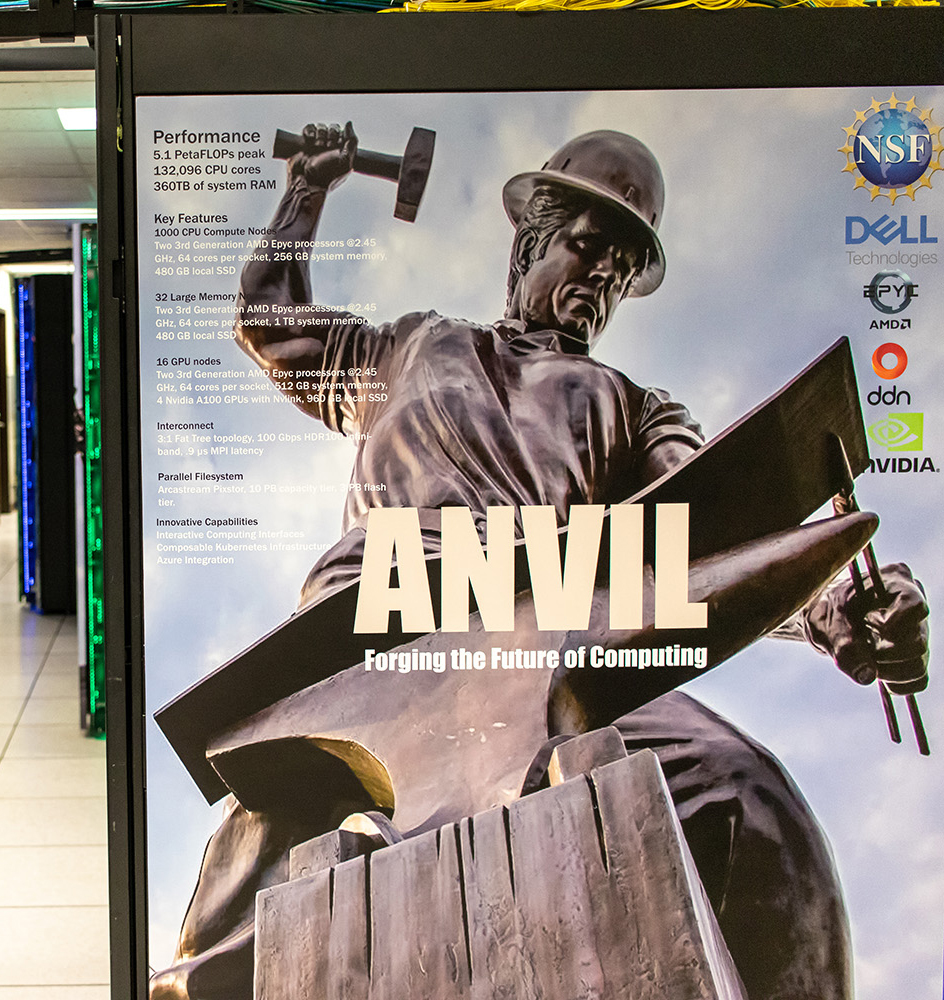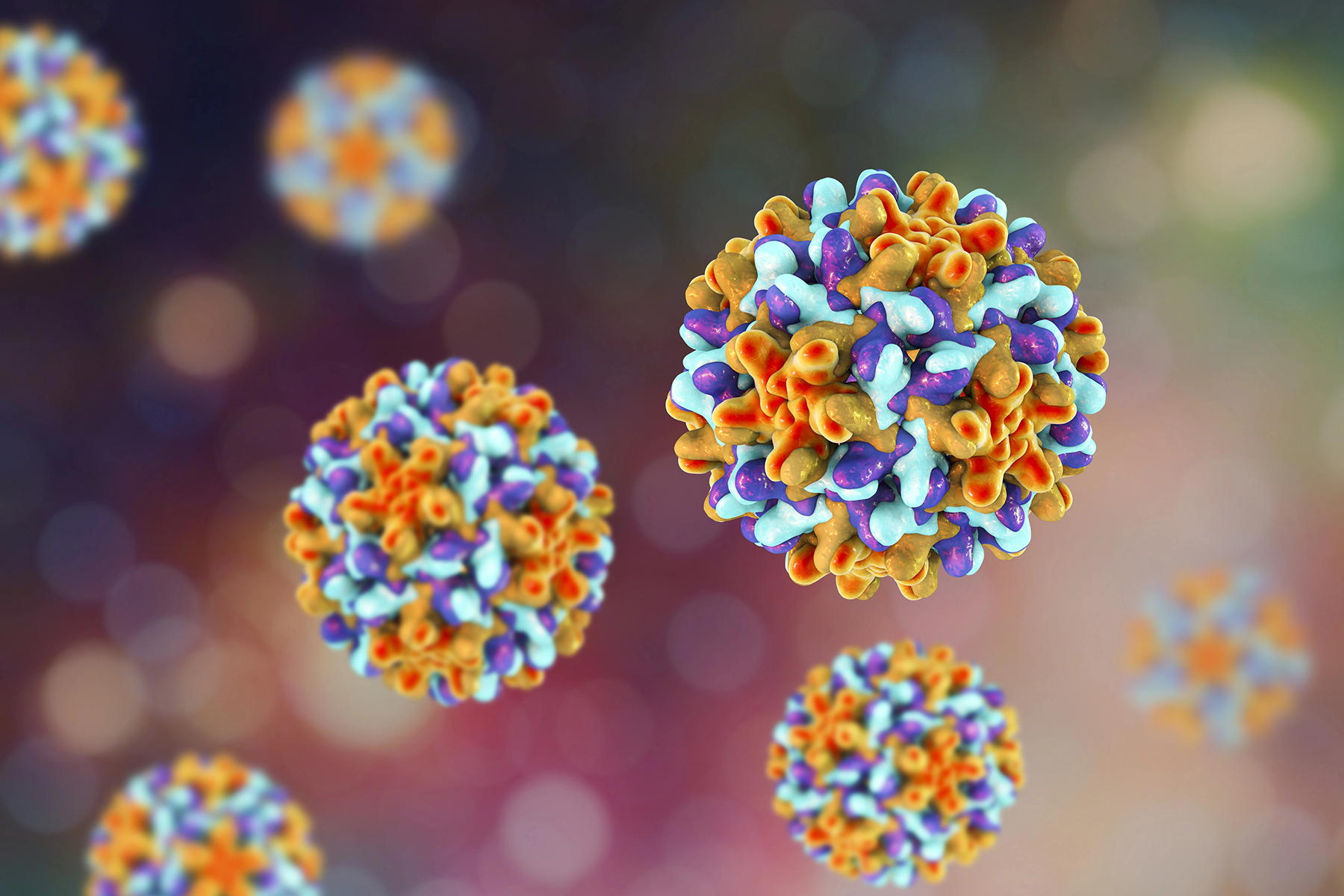Imagine your house is burgled on a regular basis. You’d want to stop these incursions, but first, you have to know how someone’s breaking in. Your house has the normal barriers houses usually do – locks on the doors and windows, and porch lights to make your home less friendly to sneaky invaders – but these aren’t working. You might investigate to find out if there’s a way into your house you didn’t know existed. When scientists tackle viruses like Hepatitis B, they need to know how that virus is breaking past the natural barriers the human body puts up to halt its progress. That’s just what Jodi Hadden-Perilla, professor of chemistry and biochemistry at the University of Delaware (UD), is using U.S. National Science Foundation’s ACCESS resources to do.

While there is a vaccine for Hepatitis B, it’s still a major public health problem worldwide. This bloodborne viral infection can become chronic, especially in those infected at a young age. Hadden-Perilla has been studying the virus to create an effective treatment for chronic sufferers. “People who suffer from chronic infection of Hepatitis B have an increased risk of developing liver cirrhosis and cancer, so researchers are studying the life cycle of the virus to identify ways to inhibit it,” she said.
To do this work, Hadden-Perilla collaborated with Gino Cingolani, a professor of biochemistry and molecular genetics at the University of Alabama (UA). “We investigated a key stage of the life cycle in which the virus binds human proteins called importins and uses them to ‘import’ its genome into the cell nucleus for replication,” Hadden-Perilla explained. “Dr. Cingolani’s group used a specialized microscope to take high-resolution pictures of the virus binding importins, showing for the first time the structural details of this interaction.”
Hadden-Perilla further explained that this isn’t as straightforward as it sounds. “We faced two challenges: First, the part of the virus that binds importins is very flexible and only becomes exposed when the virus is ready to travel to the nucleus, so only a small fragment of the virus was visible in Dr. Cingolani’s pictures. Second, previous studies show that nuclear import depends on the virus being modified with phosphates, or being ‘phosphorylated’ by the host cell, but this was not explained by the pictures because the fragment of the virus visualized in contact with importins did not contain any phosphates.”

ACCESS provided a mechanism to rapidly obtain compute cycles for a high-impact project operating on a tight timeline. We frequently recommend ACCESS to other researchers based on our positive experience with the program!
–Jodi Hadden-Perilla, professor, chemistry and biochemistry, University of Delaware
Studying these viral interactions with human cells in real time would be extraordinarily difficult, but supercomputers like Delta, at the National Center for Supercomputing Applications (NCSA), are designed specifically to assist in this type of research. Delta’s GPU-based architecture makes it ideal for simulation work. Hadden-Perilla is familiar with using supercomputing resources in her work from her time at UIUC working with the historic Blue Waters. She knew the simulations would provide the perfect tool for her team to make progress on their research.
“My research group at UD used all-atom Molecular Dynamic (MD) simulations to characterize the effect of phosphorylation on the virus’s flexible structure, as well as on the virus-importin binding interaction,” she said. “Thanks to GPU resources on NCSA’s Delta supercomputer, we showed that phosphates have both positive and negative consequences for the strength of importin binding to the virus, but that these roughly cancel each other out for no net impact. Dr. Cingolani’s group reached a similar conclusion based on biochemical assays. However, MD simulations also revealed that when the virus is modified with phosphates, its structure becomes more compact, which controls the way the importin binding fragment is displayed for recognition. A more compact virus-importin complex likely also helps the particle pass intact into the nucleus to deposit the genome there.”
Hadden-Perilla’s team also used Purdue’s Rosen Center for Advanced Computing’s (RCAC) Anvil, making use of the supercomputer’s impressive performance in this type of work.
Anvil provides 1000 CPU nodes with the latest generation of AMD Milan processors along with a robust ecosystem of computational chemistry and biosciences software. The Milan processors demonstrate excellent scaling performance for molecular dynamics codes like NAMD, which has been used in this work.
–Amiya Maji, lead computational scientist, RCAC

Hadden-Perilla’s team found the process for getting an ACCESS allocation to be well-designed. “The process of applying for the allocation was straightforward, and we had a positive experience. Resources provided on the ACCESS website were very helpful for understanding the application process.”
For more details on this research, see the original story here: Simulating Tiny Invaders
Project Details
Resource Provider Institution(s): National Center for Supercomputing Applications (NCSA), Rosen Center for Advanced Computing (RCAC)
Affiliations: University of Delaware, University of Alabama
Funding Agency: NSF
Grant or Allocation Number(s): ACCESS allocation: BIO230131. This work also used Pittsburgh Supercomputing Center’s (PSC) Anton 2, a specialized supercomputer designed for biomolecular simulation and funded with assistance from the NIH National Institute of General Medical Sciences.
The science story featured here was enabled by the U.S. National Science Foundation’s ACCESS program, which is supported by National Science Foundation grants #2138259, #2138286, #2138307, #2137603, and #2138296.


